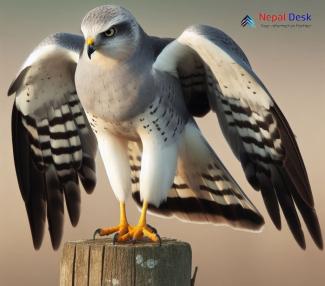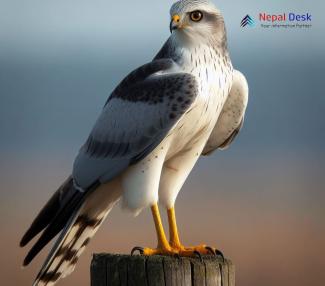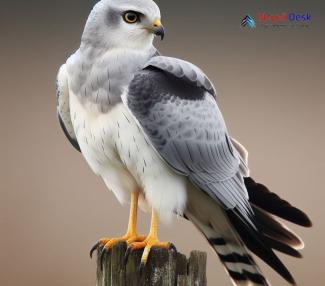The fascinating world of birds never ceases to amaze us with its diverse and captivating species. Among these enchanting creatures dwells the elusive Hen Harrier (Circus cyaneus), a remarkable raptor with intriguing characteristics. In this article, we'll delve into the taxonomy, physical features, habitat, diet, and presence in Nepal of this striking bird of prey.
Taxonomy and Physical Features
Belonging to the Accipitridae family and Circus genus, the Hen Harrier is a medium-sized bird of prey that stands out with its unique features. With a wingspan ranging from 97 to 118 cm and an average body length of 45-55 cm for males and 50-58 cm for females, they exhibit sexual dimorphism in their plumage. Males display striking grayish-blue feathers with black wingtips, while females boast brown plumage with white rump patches. Both sexes possess agile bodies specially adapted for hunting swiftly across vast landscapes.
Habitat and Diet
Hen Harriers inhabit a variety of environments across the Northern Hemisphere. They primarily favor grasslands, marshes, and open fields where they can efficiently soar low to the ground to seize their prey. These skilled hunters predominantly feed on small mammals such as voles and mice but are also known to target reptiles, amphibians, and small birds.
Presence in Nepal
The Hen Harrier's range extends across Europe and Asia, extending eastward to Mongolia. While their presence in Nepal may not be widely acknowledged or studied extensively yet – sightings have been recorded during their migration periods or overwintering in regions around western Nepal's grasslands. Continued research into the distribution of this enigmatic raptor could reveal more insights into its migration patterns.
Fun Fact:
One fascinating aspect of Hen Harriers is a unique hunting strategy known as "sky-dancing." During the breeding season, male harriers perform remarkable aerial acrobatics, whirling and twirling to impress potential mates. This display of agility and strength serves as a testament to the males' prowess – a crucial factor for attracting females who seek protection over their future offspring.
In conclusion, Hen Harriers are captivating birds with their alluring physical features and intriguing lifestyle. As bird enthusiasts and conservationists worldwide continue to uncover more about these awe-inspiring raptors, it's essential to promote awareness – not just in regions where they flourish but also among the numerous countries they traverse throughout their migration periods. By understanding and appreciating the Hen Harrier's integral role in various ecosystems, we can collectively ensure their survival for generations to come.




